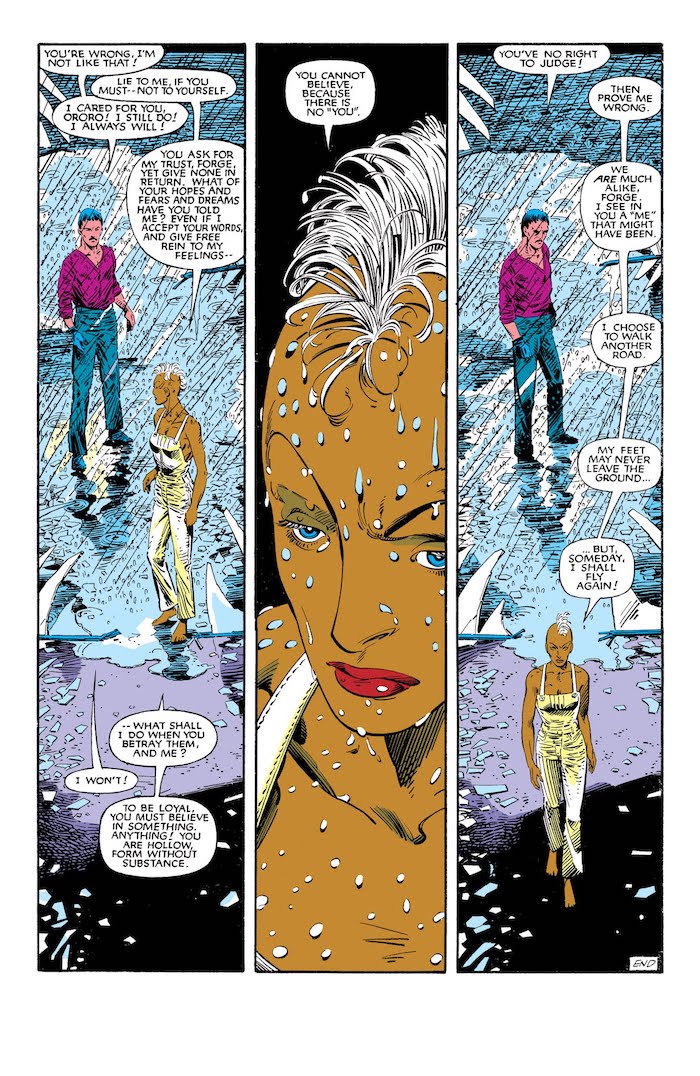For The Children
“For the Children”
Powers of X #5 (2019)
Written by Jonathan Hickman
Art by R.B. Silva
Color art by Marte Gracia
It’s a bit strange to slow narrative momentum to a crawl in the final third of a 12-issue story, but here we are with a 10th issue that feels like an epilogue following the double climaxes in the middle of the story and the previous issue’s triumphs and revelations. “For the Children” is a series of four conversations that mostly fill in details and set up plot to come, mostly with regards to establishing the new purpose of the Hellfire Club and setting up the premise of Gerry Duggan’s Marauders spin-off. There’s some light intrigue in terms of teasing out the membership of the Quiet Council of Krakoa, but it would seem that question was mostly answered by this bit of promotional art by Mike Deodato from a few months ago.
The plot is inert, but the exposition is necessary and gives Jonathan Hickman some space for pleasing character moments. It’s nice to see the often marginalized Forge take on a big role as Cypher has in previous issues, though it’s hardly surprising given Hickman’s consistent interest in scientists and engineers through his body of work. It’s fun to see Hickman revisit Namor, the prickly and extraordinarily arrogant anti-hero of his New Avengers run. The extended sequence in which Xavier and Magneto recruit Emma Frost into their grand scheme fills in some crucial information about the X-Men’s pharmaceutical business that has been simmering in the background since House of X #1, and provides a crucial beat in which a very intelligent character voices skepticism of their master plan with a nod towards previous disastrous iterations of the “mutant island nation” notion on Genosha and Utopia.
The final sequence in the distant future offers some plot movement, but the acceptance of Nimrod’s mutant archive into the Phalanx galactic hive mind is rendered with about as much drama as someone swiping a debit card and waiting a few moments for approval while having a vague concern about their checking account getting overdrawn. Nimrod the Greater provides a huge amount of exposition regarding the evolution of machines and societies. There’s a few lines that nudge the reader to notice the parallels with the main plot about the establishment of the Krakoan nation-state – “a society so advanced that it collapsed in on itself,” “we asked for sovereignty, but with it came an unexpected price” – but it’s all just setting us up for the reveal of what happens when mutation and mutant culture is absorbed and assimilated into the Phalanx. It’s interesting, but not particularly exciting.
R.B. Silva shows some signs in this issue of strain in keeping up the demanding schedule of producing six consecutive issues of Powers of X in what seems like a relatively tight window of time. His work is still quite good, but you can observe some cut corners – copy/pasted panels, more panels without backgrounds. I suppose some of this comes down to the extremely talky nature of Hickman’s script, and in fairness, Silva goes to town on drawing the holographic sea life of Forge’s home in Dallas. There is a slight blunder in that Silva draws Forge in his Jim Lee-era costume despite this sequence with him and Xavier apparently taking place long ago – this error seems to be addressed by blacking out his X belt buckle, though it’s still a generic X-Men uniform years before he’s a member. It’s no big deal, though.
Notes and observations:
• Magneto really hitting that “grow to an inferno” line hard, just in case the reader didn’t quite pick up on how aggressively Hickman was laying down the notion of an “Inferno” sequel in POX #4.
• The covers for POX #4 and #5 are reversed in terms of their relationship to actual plot developments in each issue, but I figure this was done to throw off reader speculation. It worked on me!
• The Forge/Xavier discussion about building Cerebro is the first scene of the series that perhaps didn’t really need to be dramatized, where all the information could’ve been conveyed in a text page. Still, it’s nice to get a moment with Forge and to observe Xavier as he advances his ambitions. And of course, we get a reminder that Xavier has off-world connections to the Shi’ar empire, and possesses something called “logic diamonds.” Surely all very useful information for later.
• Emma Frost, Xavier, and Magneto meet at the Louvre by the Nike of Samothrace, a surviving masterpiece of Hellenistic sculpture depicting the Greek goddess of Victory. The statue, which is believed to be created to commemorate a victory of the navy, would seem to foreshadow Frost’s forthcoming nautical adventures in Marauders in which the Hellfire Club will become, as she puts it in this issue, “the East India trading company of mutantdom.”
• So Moira X has a No-Place, eh? I’m just dying to see what she’s been up to in the present day.








